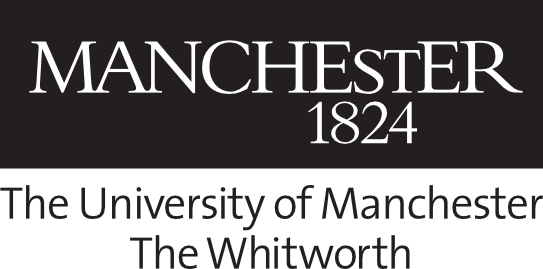History
We tell the story of a red brick institution that has continually reinvented itself over the past 130 years
As you stand in the Whitworth today, perhaps in the new landscape gallery or gazing out across the park through the restaurant windows, it’s worth taking a moment to remember how we got here.
This is an old building, and one that has continually expanded and reinvented itself over the past 130 years. Yet for all its change, one thing has remained constant. The Whitworth, founded in memory of the industrialist Sir Joseph Whitworth, was done so with one aim: that it act for the “the perpetual gratification of the people of Manchester”. It is that aim, in all its educational, cultural and inspirational forms, that creates an unbroken thread between the Whitworth then and the Whitworth now.
Originally known as the Whitworth Institute and Park, in 1889 it opened its doors to “people of all social classes,” a gallery in a park that would counteract the malaises of inner city life. Supported by sixty eminent Mancunians, including C. P. Scott, the editor of the Manchester Guardian (now The Guardian), from the beginning it was international in its outlook.
During the Industrial Revolution, Manchester was the world’s largest centre of manufacturing, and so it followed that the city should furnish itself with the sorts of internationally relevant museums, galleries and libraries that befitted its global status. This being Manchester, it was a desire that was as much practical as it was aspirational. One of the reasons that the Whitworth’s textiles collection is so strong is because the gallery’s founders brought samples of the world’s best textiles, old and new, to inspire the makers of the Manchester cloth on which the city’s fortunes were founded.
So the Whitworth’s founders took their lessons from the best museums and galleries in Europe, and by the time the first building was completed in 1908 it had already assembled two of the world's great collections: British watercolours and drawings, and world textiles.
Far from drawing a line under its collecting habits, the gallery continued to amass artworks - in fact, it never stopped, with some of the most recent acquisitions (from the Karpidas Foundation) on show today. Back in the early years of the 20th century, however, the emphasis was on creating national collections of print and modern art. Margaret Pilkington, gallery director from the 1930s to 1950s, oversaw 339 acquisitions, with more to come when the gallery became part of the University of Manchester in 1958. And in 1967, the Whitworth was given a collection of wallpapers that stands alongside that of the V&A.
Around this time, the university decided to overhaul the Edwardian building. The architects Bickerdike, Allen and Partners transformed the gallery, and by the late 1960s its breathtakingly bold, open-plan, Scandinavian-style spaces, along with an appetite for championing then-emerging artists such as David Hockney, led to it acquiring a new nickname. The Whitworth was dubbed the “Tate of the North”.
In 1995, another extension - the RIBA award-winning Sculpture Court - was added, but even so the Whitworth quickly began to run out of space. Its expanding collections, ambitious exhibitions, research and education programmes and, most importantly, a dramatic leap in the number of visitors, meant that by 2008 the Whitworth was thriving – and stretched to the very limits of its building.
Which brings us back to the here and now. The building you see today, and which we open this spring after a £15 million development, is the result of a plan as ambitious as the one put together by C.P. Scott in the 1880s. It is not just an extension, or a doubling in size: it is an expansion that has retained the best of the historic building, underlines our connection to the university, park and local communities, but also gives us, in effect, an entirely new gallery.
The design of this latest expansion was created by the innovative practice, MUMA (McInnes Usher McKnight Architects). Alongside big architectural gestures – those steel and glass wings that extend into the park – is a remarkable attention to detail. MUMA created a unique Whitworth blend of British brick, for example, and a brickwork pattern that reflects the historic textiles found in our collection. New, park-facing spaces encourage both us and our visitors to take the inside out, and the outside in.
The original building, meanwhile, has been beautifully restored. The Cornelia Parker exhibition takes advantage of the transformed barrel-vaulted exhibition galleries. At lower ground level, a new Collections Centre, housed in what was once a basement storage area, allows unprecedented access to the gallery’s 55,000 object-strong collection. It sits close by our new Study Centre and the Clore Learning Studio, which, opening directly onto the art garden, is a space for messy, creative play for all of our visitors, particularly children. And the whole development has been conducted with an eye on a sustainable future. With ground source pumps and photovoltaics used to heat the building, this is a green gallery in a green park.
The Whitworth has come a long way in the past 130 years – though in some ways it has travelled no distance at all. The building’s new facilities and spaces simply allow us to do more of what we have always done, but to do it better and to be able to open our gallery and our collections to more people than ever before. So that original aim, to create a gallery for the perpetual gratification for the people of Manchester – and for the thousands of people who pass in and out of this city - still seems no bad aim today.
Download this page as a PDF [link to PDF download], find out more about the gallery [link to the gallery in the park page] or download our map of the new building [link to PDF download of map].

